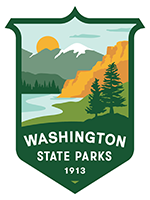Press Release
July 09, 2024
State Recognizes Paddle Safe Week July 22-28
Media contact
| Name | Ashley Seydel |
|---|---|
| Department | Boating Program |
| ashley.seydel@parks.wa.gov | |
OLYMPIA — Washington State Governor Jay Inslee has issued a proclamation declaring the week of July 22-28 to be statewide Paddle Safe Week. Supported by the Washington State Parks Boating Program, Paddle Safe Week will lead a statewide effort to create a culture of safety around paddle sports. The campaign recognizes that Washington’s diverse waterways require different skills, preparation, and safety equipment.
In the last five years, paddlers have come to represent 55 percent of statewide recreational boating fatalities. Data shows that low life jacket wear rates and a lack of safety education have contributed to this shift.
“Paddle Safe Week is a great opportunity to help reduce paddle sports-related fatalities by sharing resources and educating the community on how to recreate safely,” Boating Program Manager Rob Sendak said. “Paddlers should know that kayaks, canoes and stand-up paddleboards are subject to boating laws and regulations.”
Sendak urges all participants to boat responsibly to prevent incidents, minimize collisions and avoid conflicts with other boaters.
The Washington State Parks Boating Program maintains a collection of free digital safety resources and information for paddlers. The single, most important way to paddle safely is to always wear a life jacket on the water. State law requires all vessels, including canoes, kayaks and stand-up paddleboards to have at least one properly fitted Coast Guard-approved life jacket for each person on board. Participants under the age of 12 are required to wear the life jacket at all times, but paddlers of all ages and even those with strong swimming skills are encouraged to wear a life jacket, due to the unpredictable nature of the sport.
The program also recommends the following safety practices:
- Get Educated – Find classes through local clubs and outfitters, city and county parks and recreation departments, and online.
- Always use a SUP Leash – Stay tethered to the paddleboard for extra flotation and a chance to stay alive when falling in. For stand-up paddlers a leash is a necessity.
- Carry Essential Gear – Carry the essentials for safety, emergency communications and comfort.
- Check and Understand the Weather – Check the weather frequently before and during each trip, keeping an eye on current conditions and forecasts.
- Protect Against Cold Water Shock – Avoid the biggest risk, which is not hypothermia but cold-water shock. Cold water shock occurs in the first stage of immersion (from an unplanned fal overboard). Be prepared. Wear a life jacket.
- File a Float Plan – Before heading out, study the intended route, and let someone know the plan.
- Paddle with a Group – Go out with at least three people and stay close enough for visual or verbal contact.
- Avoid Alcohol and Drugs – Stay alert and maintain situational awareness. These are key for safety on the water.
- Learn how to self-rescue – Know how to get back in or on the craft. Paddlecraft are typically safe, but there’s a higher risk of going overboard and becoming a swimmer.
- Label your Paddlecraft – Use a sticker or some other means to provide contact information for privately owned paddlecraft. When empty paddlecraft are found adrift, it’s assumed someone is in danger.
- Be Visible to Other Boaters – Paddle to be seen. Wear bright neon and contrasting colors, put highly reflective tape on paddles, use a flagpole and carry a bright light.
Building Safe Habits
The Recreational Boating Safety Program has spent the last three years running educational programs for youth across the state to teach kayaking and water safety skills to the next generation. During that time, more than 1200 kids have participated, taking away valuable safety lessons and a life jacket of their own to keep. The program, funded in part by a No Child Left Inside grant, represents a partnership with local organizations that aims to meet kids where they’re at and reach communities with the most need. Regions with high incident data are prioritized for this program, which aims to use early education to reduce long-term boating related fatalities.
A Voice for Boating Safety
Help spread the word by sharing safety tips with your community. In addition, the Recreational Boating Safety Program maintains a library of resources and example social media content for participants to share. Through repeated exposure to safety messaging, we can promote boating safety practices with the intention of reducing fatal boating incidents in the state.
